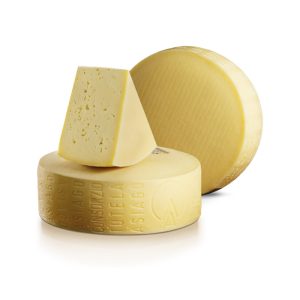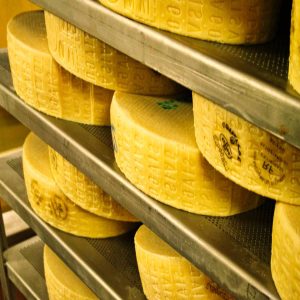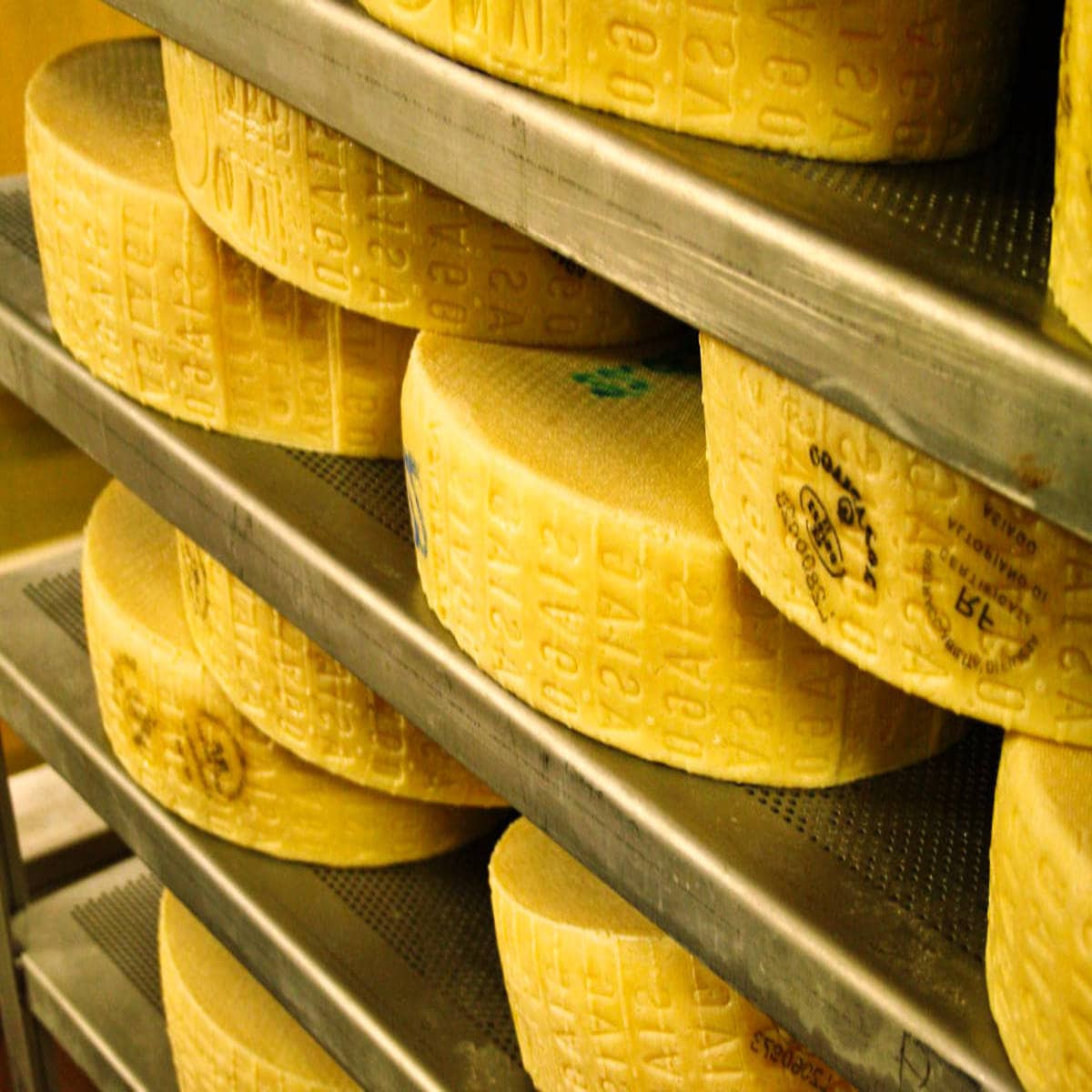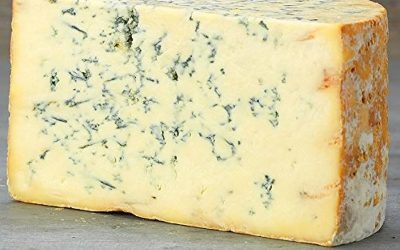Are you a cheese lover and like to experiment with different flavors and textures? Then Asiago cheese is a cheese you should definitely try. With a history dating back more than 1,000 years in the mountains of the Italian Alps, Asiago cheese is a culinary treasure that has become popular all over the world. With its unique flavor and melt-in-the-mouth texture, this Italian cheese is a versatile ingredient that can be used in a variety of recipes. From pasta with creamy Asiago cheese sauce to cheese salads with a tangy twist, Asiago cheese is a cheese that never disappoints. If you haven’t tried it yet, you’re missing out on a culinary experience you won’t regret.
¿What is Asiago Cheese?
Asiago cheese is an Italian cheese with protected designation of origin (PDO) produced in the Veneto region of northern Italy. It is made from whole cow’s milk and can be found in two variants: Asiago pressato, which is made from fresh milk and has a soft, moist texture, and Asiago d’allevo or Asiago vecchio, which is matured for several months and has a firmer texture and a more intense flavor.

Characteristics
Among the characteristics of Asiago cheese are:
- Texture: Asiago pressato is soft and moist, while Asiago vecchio is firmer and drier.
- Flavor: The flavor of Asiago is sweet and delicate in the pressato variety, and more intense and savory in Asiago vecchio.
- Aroma: Asiago cheese has a fresh and slightly milky aroma.
- Color: Asiago pressato is white or pale yellow, while Asiago vecchio is golden yellow.
Origin
Asiago cheese has its origins in the Veneto region of northern Italy. Its production is believed to have begun about 1000 years ago in the mountainous area of the Alps, where farmers produced cheese from the milk of their cows.
Initially, cheese was produced in small quantities in an artisanal way, and was used as an important source of protein and fat for the inhabitants of the region. Over time, the popularity of Asiago cheese grew, and it began to be marketed in other parts of Italy and Europe.
Asiago cheese became popular among Venetian nobility during the Renaissance, and in the 18th century it became an important commercial product in the region. In 1978, the Denominazione di Origine Protetta (DOP), a law protecting the production and quality of Asiago cheese, was established.
Today, Asiago cheese is one of the most popular Italian cheeses worldwide, and is produced in different variants, including Asiago pressato and Asiago d’allevo or Asiago vecchio. Its unique flavor, texture and aroma make it ideal for a wide variety of culinary uses.

Substitutes
Asiago cheese has a unique flavor and texture, which makes it difficult to substitute completely. However, there are some cheeses that can be used as substitutes in recipes that call for Asiago cheese. Some options are:
- Parmesan cheese: Parmesan cheese is one of the most popular Italian cheeses and has a salty, slightly sharp flavor. It is a good substitute for grated Asiago cheese in pasta and rice recipes.
- Provolone cheese: Provolone cheese has a similar texture to Asiago cheese and has a mild, slightly sweet flavor. It is a good substitute in sandwiches and salads.
- Pecorino Romano cheese: Pecorino Romano cheese is a hard, salty Italian cheese that can be used as a substitute for grated Asiago cheese in pasta and rice recipes.
- Feta cheese: Feta cheese is a salty and creamy Greek cheese that can be used as a substitute for Asiago cheese in salads and pasta dishes.
- Gouda cheese: Gouda cheese has a firm texture and a mild, sweet flavor. It is a good substitute in sandwiches and pasta dishes.
It is important to remember that each of these cheeses has its own flavor and characteristics, so the final result may vary depending on the substitute used.

Culinary uses:
Asiago cheese is commonly used grated in pasta and rice dishes, salads, sandwiches and appetizers. It can also be eaten on its own as an appetizer, with a good red or white wine.
However, there are many delicious recipes that can be made with Asiago cheese. Here are some of the most popular ones:
- Pasta with Asiago cheese sauce: Cook your favorite pasta and then mix it with a creamy sauce made with grated Asiago cheese, heavy cream, garlic, onion and a little ground black pepper.
- Asiago cheese risotto: Make a creamy and smooth risotto using chicken broth, rice, onion, garlic, grated Asiago cheese and a touch of white wine.
- Asiago cheese and tomato pizza: Top your pizza with a layer of fresh sliced tomatoes and grated Asiago cheese. Add some fresh basil leaves and bake until the crust is golden brown and crispy.
- Asiago cheese and ham panini: Place a few slices of ham and Asiago cheese on a panini and heat in a sandwich maker or on the grill until the cheese melts and the bread is golden brown.
- Asiago cheese salad: Mix lettuce leaves, tomatoes, cucumber, onion and some grated Asiago cheese in a bowl. Dress with a vinaigrette of olive oil, balsamic vinegar, garlic and dijon mustard.
These are just a few ideas to start experimenting with Asiago cheese in the kitchen. We also recommend you try other cheeses such as leaf cheese, tenate.
¿What does asiago cheese taste like?
¿What is Asiago cheese similar to?
Differences between Asiago and Parmesan
Asiago and Parmesan are both Italian cheeses with a hard texture and sharp flavor, but they do have some differences:
- Origin: Asiago cheese comes from the Asiago plateau in the Veneto region of northern Italy, while Parmesan cheese comes from the Parma, Reggio Emilia, Modena, and Bologna areas in Emilia-Romagna region.
- Milk: Asiago cheese is traditionally made from cow’s milk, while Parmesan cheese is made from cow’s milk that has been skimmed.
- Aging: Asiago cheese comes in two types: fresh and aged. Fresh Asiago has a smooth, mild flavor and is similar to a young cheddar, while aged Asiago has a sharper, nuttier flavor that is similar to Parmesan. Parmesan cheese is aged for at least 12 months and has a hard, grainy texture with a salty and nutty flavor.
- Texture: Asiago cheese has a smooth, firm texture when young and becomes more crumbly and granular as it ages. Parmesan cheese has a hard, brittle texture with a granular, flaky consistency.
- Use: Asiago cheese is often used in dishes like pasta, pizza, and salads, while Parmesan cheese is a popular topping for pasta dishes, soups, and risottos.
Overall, while both cheeses are delicious and share some similarities, they have distinct differences in flavor, texture, and usage that make them unique in their own right.
Differences between Asiago and Mozzarella
Asiago and Mozzarella are both Italian cheeses, but they have some differences:
- Milk: Asiago cheese is traditionally made from cow’s milk, while Mozzarella is traditionally made from buffalo milk, although cow’s milk is also used.
- Texture: Asiago cheese has a firm, slightly grainy texture when aged, while Mozzarella has a soft, stretchy texture when fresh.
- Flavor: Asiago cheese has a nutty, slightly sweet flavor when young and becomes sharper and tangier as it ages. Mozzarella has a mild, creamy flavor with a slight tang.
- Aging: Asiago cheese comes in two types: fresh and aged. Fresh Asiago has a smooth, mild flavor, while aged Asiago has a sharper, nuttier flavor that is similar to Parmesan. Mozzarella is usually eaten fresh, although there is a slightly aged version called “scamorza.”
- Use: Asiago cheese is often used in dishes like pasta, pizza, and salads, while Mozzarella is a popular cheese for pizzas, sandwiches, and lasagnas.
Overall, Asiago and Mozzarella have different textures, flavors, and uses, making them unique cheeses in their own right.






0 Comments